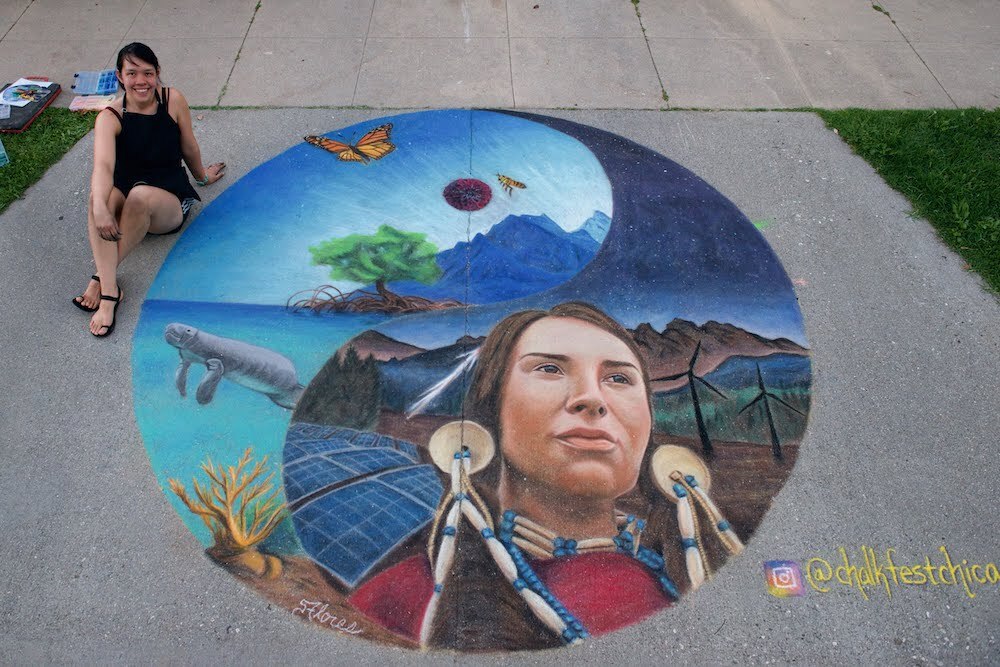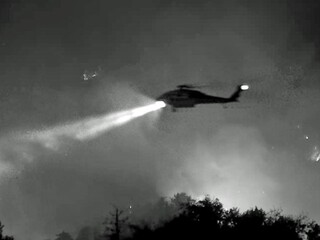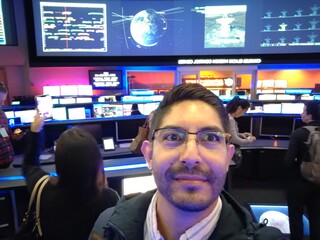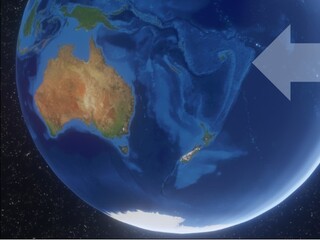Earth Science Stories | June 1, 2021
Career profile: How Sarah Flores became a software engineer at JPL

Sarah Flores is a data manager and website developer at NASA's Jet Propulsion Laboratory (JPL) who works with radar instruments.
What were your favorite hobbies growing up?
I grew up in Orange County, California, and I was very into art. I’ve always enjoyed drawing, painting, calligraphy, and origami. I also really liked math.
What sparked your interest in engineering?
It kind of runs in the family. My dad was a software engineer, and he would bring home old, broken computers that had been left in the dumpster at work, and he’d say, “Hey, kids, let’s open this up.” That was really fun. I also played with a lot of LEGOs. My brother and I were always thinking about building and designing things. This is going to sound dorky, but when we were kids, we’d either each build our own LEGO medieval castle and make stories with the characters in the castle, or we’d build spaceships and have space battles. We spent hours doing things like that.
How did you end up at JPL?
I majored in computer science at the University of California, Irvine. In my classes, there were 10 men for every woman, so that was intimidating. I did well in the classes and with coding, but I never raised my hand, and had a sense that I wasn’t meant for this field. JPL wasn’t on my radar at all. But then, someone I worked with encouraged me to apply for a NASA summer internship. I said, “You’re kidding, right? I’ll never get it.” But my mentor said, “No, do it!” so I applied to humor him. And then I got a call from JPL that in fact, I did get it. I was super excited. I couldn’t believe it. Thankfully, my supervisor at JPL liked my internship work, and she brought me back for a full-time position after I graduated. I think this is the dream job I didn’t know I wanted.
What are your main responsibilities at JPL?
I am part of a team that collects radar data from airplanes – at 41,000 feet in the air. The specific instrument we use is called UAVSAR (Uninhabited Aerial Vehicle Synthetic Aperture Radar). I create user-friendly databases that store the radar information, collected in all sorts of countries. We’ve sent UAVSAR to study soil moisture and volcanoes in Central and South America, an oil spill in Norway, glacier melt in Greenland, the tropical rainforest in Gabon, and wildfires and earthquakes right here in California. Every single year, we measure the San Andreas fault using UAVSAR.
-
UAVSAR
UAVSAR is a JPL radar instrument that flies on small planes, and can study all sorts of things: earthquakes, ice melt, oil spills, wildfires, flooding, wetlands ... the list goes on.
I also built a system to track all the radar equipment we use for UAVSAR, which our team uses all the time, and I built a web flight planning tool. With that tool, it’s easy for a scientist to plan out exactly where the airplane will fly, so that UAVSAR can collect data from the exact study area they are interested in.
It can be a beast organizing all this data, but it’s also fun, and there’s a lot of creativity involved to design the most effective and cleanest structure so that people can easily search and find the data they want. UAVSAR data is publicly available for everyone.
Aside from college classes and training, what other skills have helped you succeed at JPL?
I think the soft skills are really important – getting along and working in a tight-knit team. We have to rely on each other. I have two daughters, and becoming a parent helped me develop those soft skills. It helped me become a better leader, because you have to lead your own kids. It helped me learn to not take things personally and how to better diffuse tension building up in a group.
What do you do for fun?
My big thing is street painting – I’ve been doing chalk festivals for over 17 years. I’ve drawn Malala Yousafzai and Mae Jemison. I also drew Kelly Marie Tran, who was an actor in Star Wars. I was over the moon to see her in the movies. During the pandemic, I drew an Earth Day tribute in my driveway. The paintings of course fade over time and are not permanent. People ask, how can you let something so beautiful get washed away? But I feel like I’m giving the gift there in the moment, for the people who can see it. It’s a performance art, and I just love sharing my art with the public.





